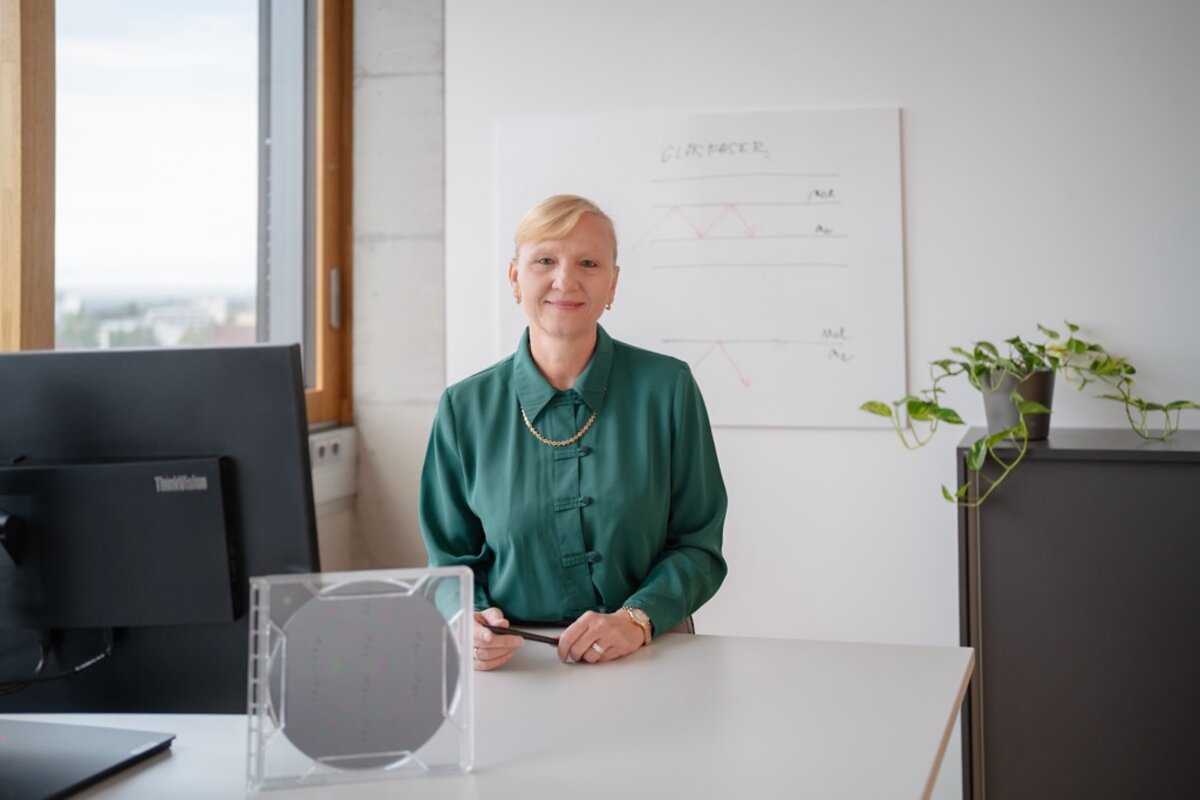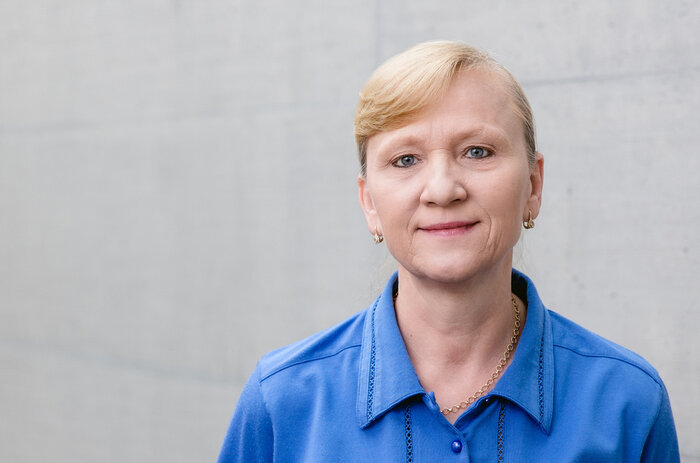Dana Thinks in Images
(Issue 4 / 2024) Multitalented Dana Seyringer is a researcher at the Microtechnology Research Centre and, since March, a professor of Photonics. She credits her success to colours and images. With her expertise, she especially empowers girls on their path into technology.

From Visual Thinking to Cutting-Edge Research
Dana Seyringer, multitalented and leading researcher, is a Senior Scientist at the Microtechnology Research Centre and, since March, Professor of Photonics. Known for her groundbreaking work in optics, she attributes her success not only to her expertise but also to her vivid imagination. Dana is a visual thinker: she thinks in images and is also gifted with language. Alongside her passion for science, the Slovak native loves poetry and photography, and she harnesses the power of visualisation in her research.
A mark of recognition – Professorship in Photonics
Her professorship in Photonics, awarded by the then Slovak President, is one of the highest academic honours in Slovakia – a sign of appreciation for her scientific achievements and educational activities, Dana explained in an interview.
She earned this professorship at one of the world’s leading universities for photonics: the Slovak University of Technology in Bratislava – though it is not a fixed position. Dana studied there in the 1990s and has maintained a close connection ever since through teaching assignments, research projects, publications, and conferences. For FHV, Dana’s alma mater is an important cooperation partner.
Optical innovations: Research on the OCT chip and beyond
For over twenty years, Dana has been devoted to designing passive optical components. A key area of her research is developing an innovative OCT chip with the potential to revolutionise ophthalmology.
“Current commercial solutions have several drawbacks,” Dana explains. “For example, they cannot be used at the point-of-care — directly where the patient is treated — and involve high sensitivity, costly operation, and significant personnel effort. In contrast, highly integrated, miniaturised photonic devices require little space as the core technology is chip-sized. Their small size makes them deployable everywhere. They enable non-invasive examinations at the point-of-care, are robust and cost-effective” (more details in her lead article Light Signals in the Research Newsletter 1/2024).
In future, doctors will be able to bring a practical device directly to patients and capture retinal images on site to detect abnormalities.
Besides clinical applications, Dana develops chips for optical networks which, when connected, can be used simultaneously for various purposes. For example, sensors in tunnels measure physical properties like pressure and temperature to trigger warnings at critical values. These technologies also play an important role in food storage.
Sharing knowledge: Commitment to photonics education
Dana’s daily work as a researcher also involves passing on her knowledge, as she is passionate about inspiring young people to engage with photonics. She leads workshops for schoolchildren and is active in the Education Group of the Austrian Photonics Platform. “It is very important to me,” Dana emphasises, “to share my knowledge, and I would especially encourage young girls to pursue careers in technology.”
She shares her enthusiasm at international didactic conferences, with new dates for upcoming school workshops already planned.
Dana’s path into research
Dana’s spark for technical science came relatively late, she recounts — also: “When I was a child, photonics did not yet exist. It is a very young technology.”
She studied microelectronics and originally wanted to become a teacher, having given maths tuition in secondary school. Early on, she wished to share knowledge. During her diploma thesis, she discovered her interest in scientific problems and their solutions. This led her to pursue a doctorate. “I wanted to research and teach at the same time,” recalls the versatile Dana, who as a child had dreamed of becoming a writer: “I wrote stories and poems even then. Medicine also interested me. I had many interests.”
From post-revolution student to researcher at FHV
As a post-revolution child after the Velvet Revolution of 1989, Dana came of age in a new era of freedom during her third university year. Borders opened, academic contracts were signed between universities, and students were free to travel — Dana was one of them: she was an exchange doctoral student at the University of Hull and later completed a second doctorate at Johannes Kepler University Linz, where she also met her husband, the Vorarlberg native Heinz Seyringer.
The couple moved to Vorarlberg. Dana transitioned from microelectronics to photonics, gaining outstanding knowledge in just one year. The turn of the millennium marked a successful period for her as R&D manager at Photeon Technologies. “Those were very important eight years for me, a formative phase in my career,” Dana adds. After just one year, the company had developed its first chips. Dana secured seven patents and was named FEMTech “Researcher of the Month” in 2005. She was already active in supervising students then; two of her students even won awards for their master’s theses.
After this intensive time in industry, Dana found an ideal environment at FHV in 2008 to continue her research and actively shape the university’s research — including regular invitations to present her results at international scientific conferences.
Family, photography, and many possibilities
Dana values her private life as much as her professional successes. “My life is not just work,” she stresses, “I also take time for my family.”
The world is colourful, and Dana loves capturing it in nature through her camera lens — though not as often as before. In Slovakia, she used to publish her photographs and even a book of her own poems. “Life is too short for all the things I want to do,” smiles the multitalented Dana Seyringer. “The world is colourful, and there are many opportunities — but you have to make choices.”
About Dana Seyringer
Dana Seyringer, Professor of Photonics and mother of two grown daughters, grew up in Martin, Slovakia. As a habilitated Senior Scientist at FHV, she researches the design of passive optical components and is regarded as a leading expert in photonics. Originally from a textiles school, she earned her PhD in 1996 at the Faculty of Electrical Engineering and Information Technology at the Slovak University of Technology in Bratislava and a second PhD in 1998 at Johannes Kepler University Linz. Recipient of the Vorarlberg Science Prize 2016, she has published two books and numerous papers. Dana supervises students from Bachelor to Doctorate level.
In her free time, Dana prefers to spend time with family and in nature.
Further Links:
Photonics Austria – Austrian Photonics Platform
